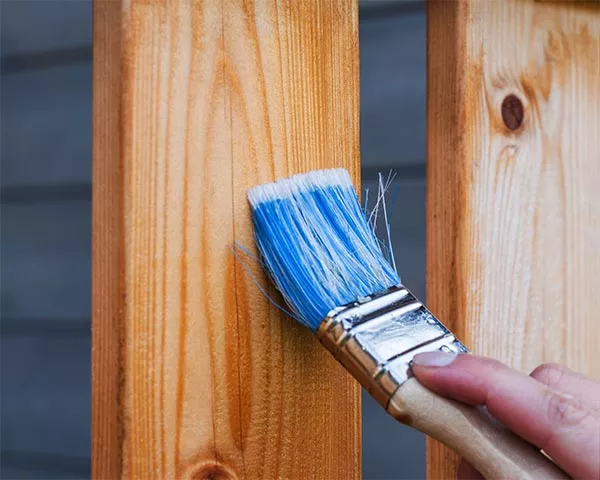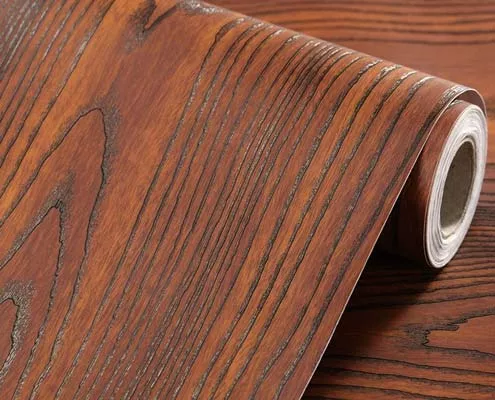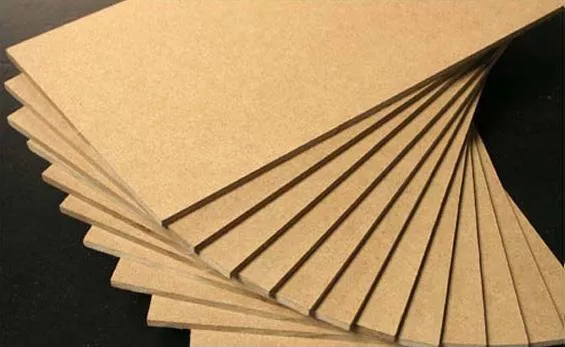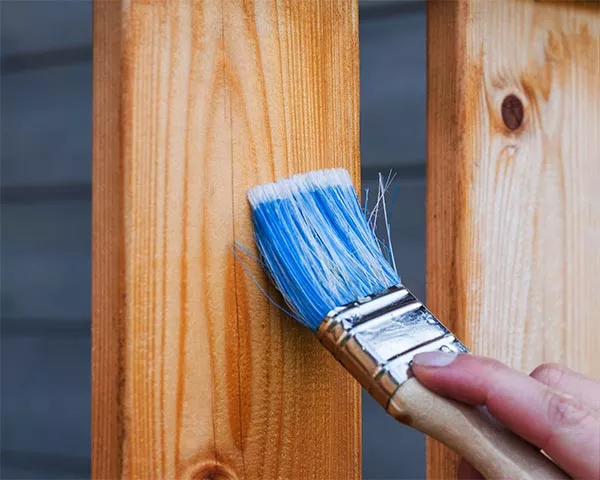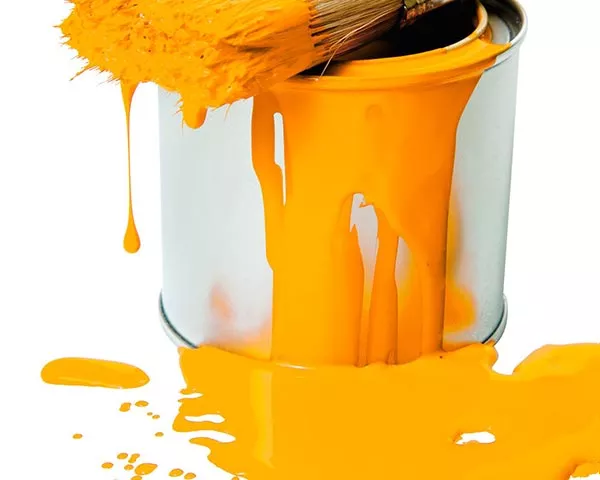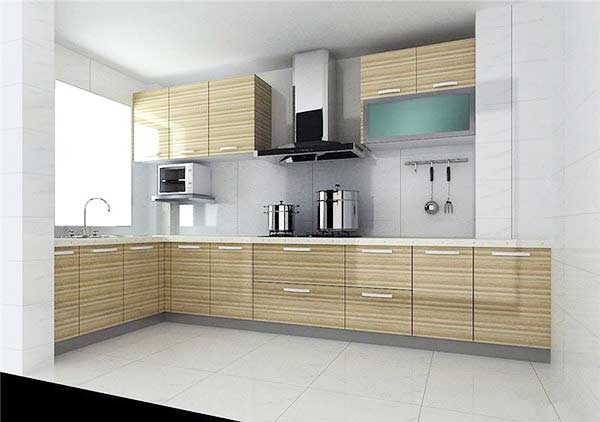Tips To Choose Furniture by Artificial Board
When it comes to furniture selection, the hot topic is always focusing on three two points – friendly environment, good appearance, and price. Of course, we want to choose the real wood furniture directly, it is beautiful, with no formaldehyde. But due to the environmental protection, high cost, and complex craftsmanship, we also want to look for a good replacement for wood grain furniture. Therefore, there is a lot of panel-type furniture appearing on the market, let’s learn to choose the suitable furniture according to the based making board of them.
There are 13 types based boards for furniture making on the market, follow me to know more about these boards, so that you can select the furniture in your heart.
Types of furniture-based board
- Low-density fiberboard (LDF)
- Medium-density fiberboard (MDF)
- High-density fiberboard (HDF)
- Particle board
- Solid wood particle board
- Melamine board
- Solid woof grain board
- Plywood
- Decorative panel
- Blockboard (large core board)
- Wood-plastic board
- Ou Song board
- Functional board ( deformaldehyde removal board )
- …etc
1. Low-density fiberboard (LDF)
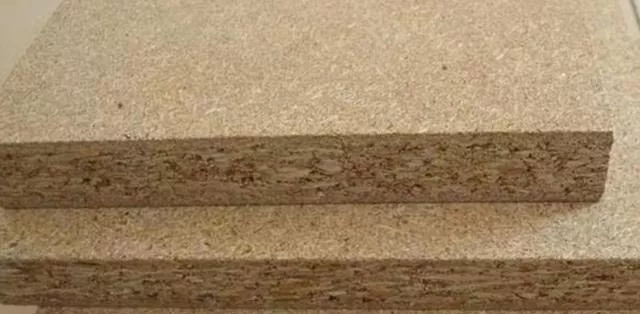
Low-density fiberboard is made of wood fiber or plant fiber or shaving material. The process of LDF is to add a larger amount of urea-formaldehyde glue and accessories into the wood fiber material, then press the all material under high pressure & high temperature.
Its density is lower than 450 kg/m3, the fiber particles are large, the internal structure is not uniform, the strength is relatively insufficient, and the self-weight is light. Therefore, we call it a low-density fiberboard.
2. Medium density fiberboard (MDF)
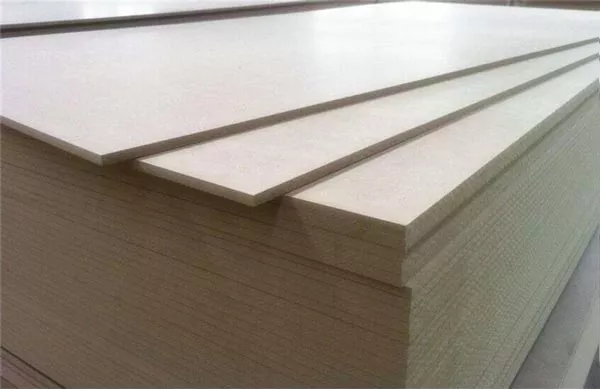
Medium-density fiberboard is made of wood fiber or other plant fiber and urea-formaldehyde adhesive, formed under high pressure and high temperature. Due to the density being higher than low-density fiberboard, range 245-880 kg/m3, we call it medium density fiberboard, MDF.
The MDF has smaller fiber particles than LDF, uniform inner structure, good strength, and moderate weight.
But, the nail-holding force is insufficient. You need to avoid multi-disassembly and assembly of the panel-type furniture. Meanwhile, due to the raw material component, the medium-density fiberboard will volatilize urea and formaldehyde, you need to wait a half year before living new house. Or you can take measures to remove the formaldehyde.
3. High-density fiberboard (HDF)
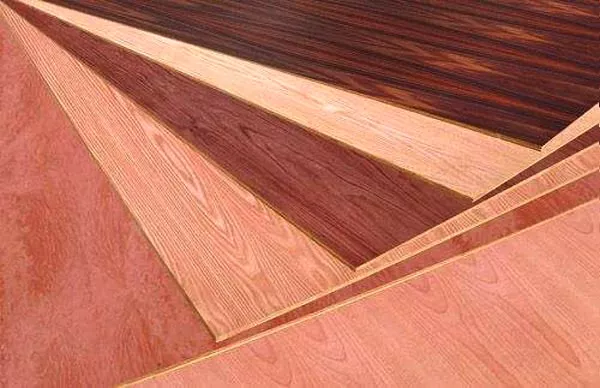
It is a board made of wood fiber, wheat straw plant fiber and glue under high temperature and high pressure. Its density is about 680-850 kg/m3, the fiber particles are small, the internal structure is uniform, the strength is large, and the self-weight is large, but the tensile and bending resistance is not good.
4. Particleboard
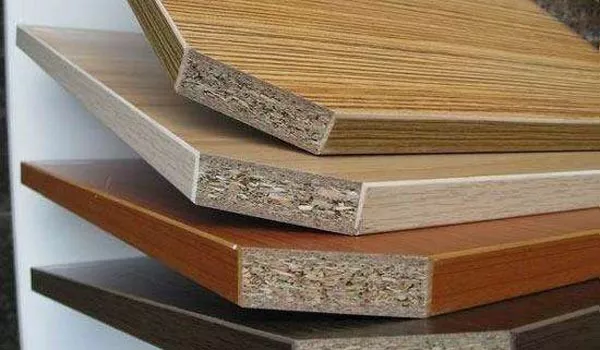
It is a thin plate made of wood scraps, wood shavings, small-diameter wood branches, and bark as the main raw materials, and then infiltrated with glue and additives.
The pressing method can be divided into two categories: extruded particleboard and flat-pressed particleboard. The internal raw materials of this type of board are uneven in size and poor in strength but have high possibilities at furniture structure, its price also is cheap, and is generally not suitable for making larger or mechanically demanding furniture.
5. Solid wood particle board
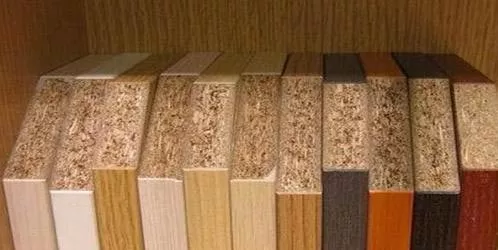
Solid wood particle board is made of wood fiber, and includes three layers: long wood fibers in the middle, the fine wood fibers on the other side, formed under high pressure and high temperature. Due to the rough surface, the solid wood particle board is always applied with melamine paper, its cross-section is a honeycomb plate.
Solid wood particle board is a trend in the furniture market, popular in Europe and the United States.
Why it is so popular? Let’s see the feature of the solid particle board.
Process:
Solid wood particle board is a kind of shaving with small diameter wood, thinning wood, wood core, board skin, branch wood, etc. as raw materials, which are processed by special equipment to grow 40mm, 70mm, 5mm, 20mm, 0.3mm, 0.7mm thick. It is a kind of wood-based panel formed by hot pressing after drying, gluing, and special equipment. Solid wood particle board is a type of particle board. The solid wood particle board uses wood chips as raw materials, and the wood fiber particles in the board are larger, which more retains the essence of natural wood. It is a new and environmentally-friendly substrate. It is precise because it is spliced with wooden fragments, so its surface is smooth and delicate, without knots, bug eyes and other defects, and has good stability and uniform material.
Features:
Strong decorative performance
The surface of the particle board is smooth and delicate, without knots, insect eyes, warping, and cracking. More decorative than other woods.
Warpage is not easy to deform
The solid wood particle board has small warpage and deformation, good dimensional stability, high strength, good stiffness, and it is not easy to bend when hanging heavy clothes. The wood-based panels used in the European furniture market are mainly solid wood particle boards.
Strong nail grip
The interior of the solid wood particle board is granular in a cross-staggered structure. Therefore, the nail holding force is strong, and round nails and screws can be nailed. These machinability properties are significantly better than MDF, but there is still a gap compared with solid wood furniture.
Good processing performance
The density of solid wood particle board is generally greater than that of solid wood, and its physical and mechanical properties are excellent. It is the closest to natural wood and better than natural wood among various wood-based panels. Therefore, the machine has excellent processing performance, and can be processed with the processing configuration and methods of processing natural wood. The interior of the solid wood particle board is granular in a cross-staggered layout. The particles are arranged in a certain direction. Its longitudinal bending strength is much larger than that of the transverse direction. It can be sawed, sanded, planed, drilled, nailed, filed, etc. Processing, is a good material for the furniture industry.
Environmental performance
The wood particle board is made of wood scraps, which determines its environmental protection and avoids the secondary waste of materials. In foreign countries, 70% of its furniture substrates are made of solid wood particle boards. Every person on earth should contribute to the sustainable development of the world. Generally, the formaldehyde content of solid wood particle board with E1 environmental protection standard is low, and the environmental protection performance reaches the national standard.
shortcoming
Glue is used in the processing process, and the environmental protection performance is slightly worse than that of solid wood;
6. Melamine board (ecological board)
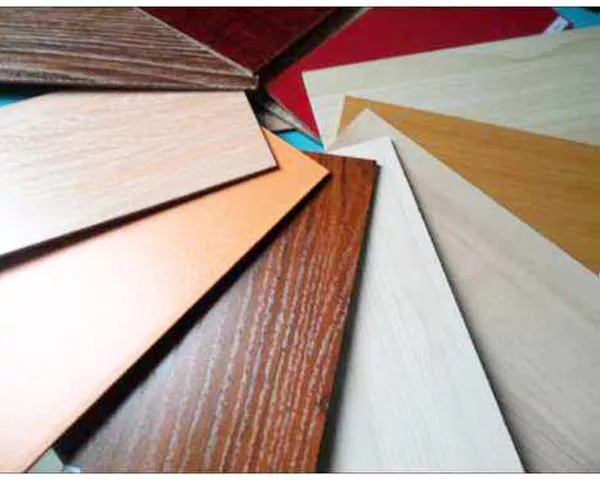
The full name is a wood-based panel with a melamine-impregnated film paper finish. It is a plate made by soaking paper of different colors or textures in melamine resin adhesive, drying and curing it to a certain extent, and paving it on the surface of particleboard, medium density fiberboard or hard fiberboard, and then hot pressing.
The conditions required for the production of triamine board: pressure 900 tons – 1000 tons; temperature 200 degrees; time 40 seconds;
The main parts of the furniture are the outer chamber and the inner chamber; the thickness of the materials used is 80 grams and 120 grams; the appearance can be divided into two types: pockmarked surface and plain surface.
Melamine is a very commonly used flame retardant. The material soaked in melamine will sublime or decompose to generate flame retardant gas when heated, and it needs to absorb a lot of heat during decomposition, so melamine is most commonly used to make fireproof boards. Therefore, the melamine board is resistant to high temperatures.
Melamine paper is directly laminated on the surface of wood-based panels such as particleboard and fiberboard at high temperatures without adhesive, and the surface does not need paint treatment after lamination, so it is more environmentally friendly.
In addition, the surface texture printing of melamine paper adopts water-soluble ink, which is very rich in color and texture, and is very decorative. Based on these advantages, the application field of the triamine board is more and more extensive.
7. Solid wood board
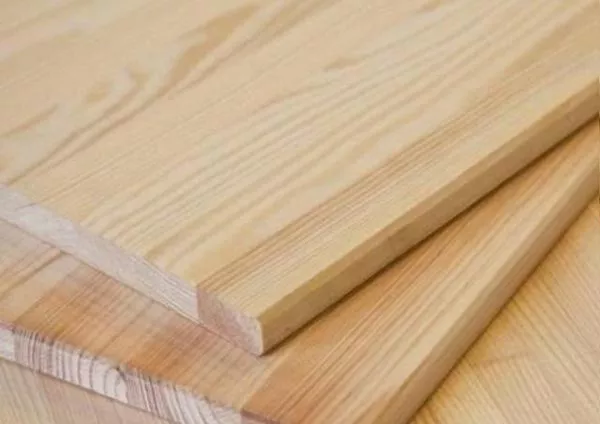
The solid wood board is made of whole natural wood and is a good choice for home decoration and furniture. Besides high prices and maintenance, almost no shortcomings. But the tree will is reduced if more and more wood furniture. With the high sense of environmental protection, more and more people begin to choose the replacement of solid wood grain furniture.
8. Plywood
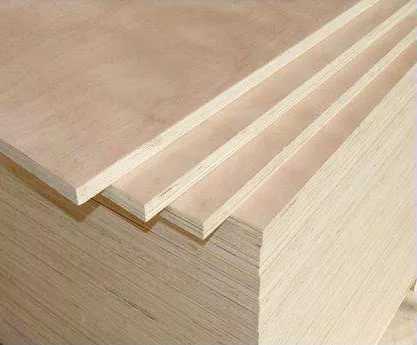
Plywood is the most common artificial board for furniture making, we also call it fine core board. It is made of multi-layers of one-millimeter-thick veneer or sheet adhesive. Generally, the plywood is divided into six specifications: 3 pcs, 5 pcs, 9 pcs, 12 pcs, 15 pcs and 18 pcs (1 cm is 1mm).
9. Decorative panel

The decorative panel is plywood with 0.2mm thick wood surface layers on the other side, applied the panel nature wood grain design.
In other words, the decorative panel is special plywood.
10. Blockboard (large core board)
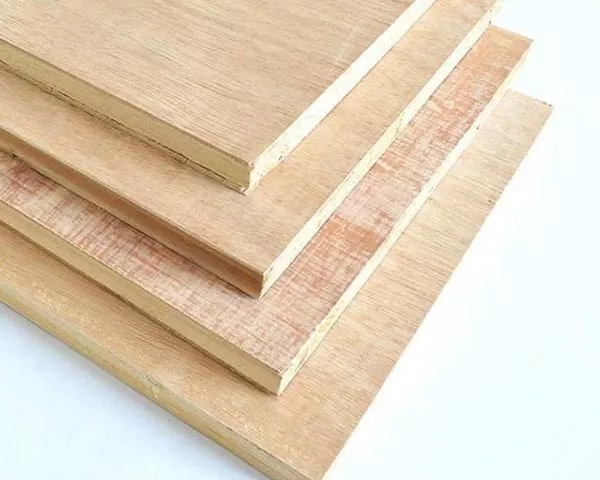
Blockboard, commonly known as the large core board. The large core board is made of two pieces of veneer that are glued and spliced together. The price of a large core board is cheaper than that of a thin core board, and its vertical flexural and compressive strength (distinguished by the direction of the core material) is poor, but its lateral flexural and compressive strength is higher.
11. Wood plastic panel
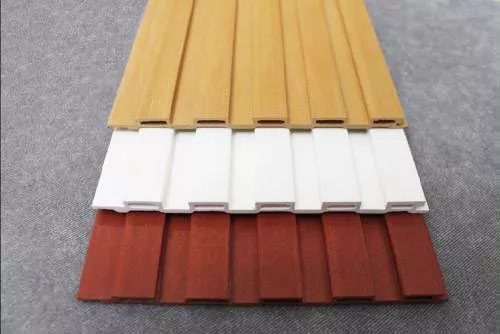
As the name suggested, the wood-plastic panel is made of kinds of hot melt plastic material and wood fibers, plant fibers such as plants.
Through kinds of hot melt plastic to combinate the wood powder filling material, the wood-plastic panel has excellent performances in tensile strength, flexural strength, flexural modulus and impact strength. Even the Vicat softening temperature of its products all meet or exceed international advanced standards.
12. Ou Song board
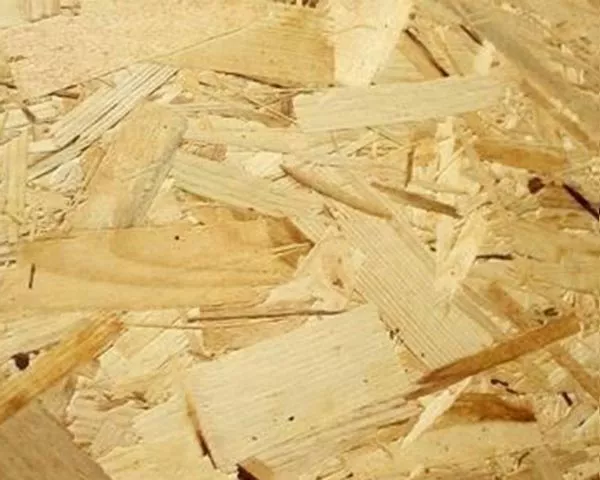
Process:
The raw materials of Osong board are mainly soft needles, small diameter wood of broad-leaved trees, fast-growing thinning wood, etc., such as eucalyptus, fir, poplar thinning wood, etc. x 24 feet). The manufacturing process is mainly to dry, sizing, directional paving and hot-pressing of shavings with a certain geometric shape (usually 50mm-80mm in length, 5mm-20mm in width, and 0.45mm-0.6mm in thickness).
The application of “Ou Song board” in furniture has achieved unprecedented development. Many large furniture companies have begun to use “Ou Song board” to make furniture. The reason why it is popular among consumers is that it has low formaldehyde emissions and is strong and durable. And it is lighter than the furniture made of medium density fiberboard (medium fiberboard) and particleboard (also known as solid wood particle board, or melamine board).
Ou Song board is the fastest-growing board in the world. It has been widely used in construction, decoration, furniture, packaging, and other fields in North America, Europe, Japan, and other developed countries. It is an upgraded product of blockboard and plywood.
Compared with other types of boards, the disadvantage of Ou Song board is that the flatness is poor, and the surface is a bit thorny when there is no paint on the surface.
13. Formaldehyde removal board (functional board)
In the production process of melamine board (ecological board), a layer of chitin and nano-silicon chips are rolled on the surface of the board. Chitin has the effect of decomposing formaldehyde, and the nano-silicon chip has the effect of adsorbing formaldehyde. With the purification coating, it is more environmentally friendly than many boards on the market, because the coating can not only solve the trace formaldehyde released by itself, but also absorb the formaldehyde released by other objects in the purification room, but the disadvantage of this type of board is the price. Slightly expensive.
All kinds of plates have their own advantages and disadvantages, and the prices are also different. What kind of plates are selected depends on what they need. In the end, environmental protection performance must be guaranteed.

